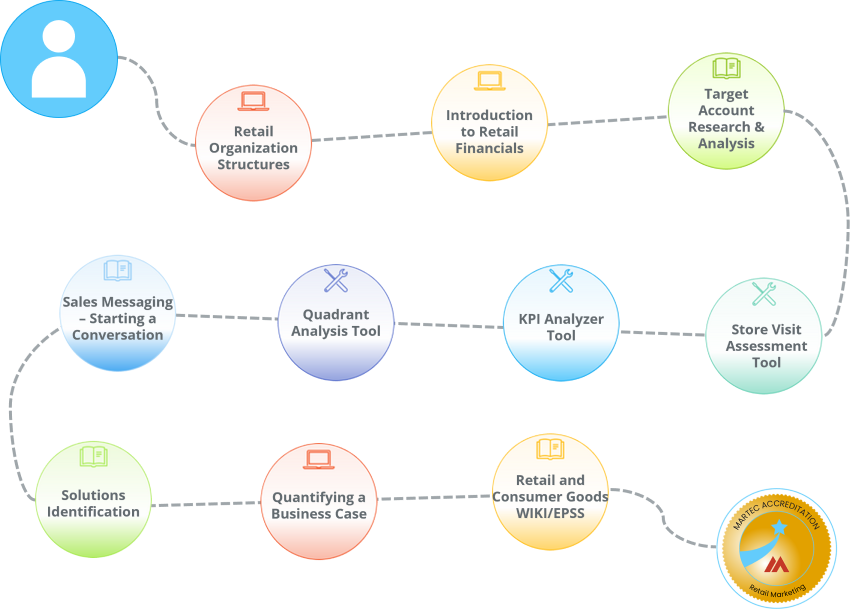Retail Marketing Learning Path
Retail Marketing Learning Path
This learning path is for people involved in marketing roles where they need to produce industry specific collateral, relevant marketing campaigns, define market research, etc. This learning path builds on the Induction learning path, so marketing people should either have studied the Induction learning path before or have the equivalent knowledge from past industry experience.
Select any of the circles along the path to find out more about each step.

The Skills You Learn
By studying this learning path, consultants will gain these skills:
- Identify and articulate key trends in the retail industry of relevance to your market segments.
- List the major retail business formats including online and describe the differences between each one including identifying key impacts on day to day retail business processes.
- Explain the key retail processes in buying, merchandising, store operations, e-commerce, omnichannel retailing and retail marketing.
- Analyze typical target accounts IT deployments against the Quadrant Analysis to identify gaps and use that knowledge to create effective messaging.
- Analyze a retailer's financial statements to identify trends, business challenges and suspect opportunities in the account. Use that insight to develop better messaging.
- Research retail organizations and identify the key senior management functions and their potential pain points and incorporate that knowledge into marketing plans.
- Identify sources of information and industry performance norms to support target account analysis and planning.
- Identify and prioritize solution areas their company can address.
- Identify and create a range of suitable sales and job aids for the sales organization.
- List the quantifiable benefit areas for each solution opportunity.
